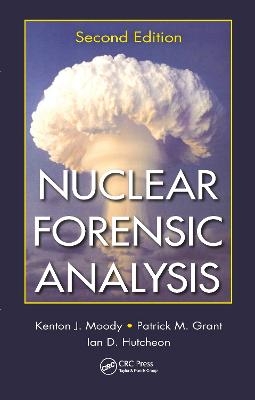
Nuclear Forensic Analysis
CRC Press (Verlag)
978-0-367-77804-0 (ISBN)
Now in its second edition, Nuclear Forensic Analysis provides a multidisciplinary reference for forensic scientists, analytical and nuclear chemists, and nuclear physicists in one convenient source. The authors focus particularly on the chemical, physical, and nuclear aspects associated with the production or interrogation of a radioactive sample. They consolidate fundamental principles of nuclear forensic analysis, all pertinent protocols and procedures, computer modeling development, interpretational insights, and attribution considerations. The principles and techniques detailed are then demonstrated and discussed in their applications to real-world investigations and casework conducted over the past several years.
Highlights of the Second Edition include:
A new section on sample analysis considerations and interpretation following a post-detonation nuclear forensic collection
New case studies, including the most wide-ranging and multidisciplinary nuclear forensic investigation conducted by Lawrence Livermore National Laboratory to date
Expanded treatments of radiologic dispersal devices (RDDs) and statistical analysis methodologies
The material is presented with minimal mathematical formality, using consistent terminology with limited jargon, making it a reliable, accessible reference. The broad-based coverage provides important insight into the multifaceted changes facing this recently developed science.
Kenton J. Moody is with the Nuclear Chemistry Division at Lawrence Livermore National Laboratory (LLNL), where he is a technical leader for the application of nuclear and radiochemical techniques to problems in national security and the U.S. nuclear stockpile. He also performs basic research on the heaviest elements. In addition to numerous classified reports detailing the performance of nuclear explosive devices, he has coauthored more than 100 refereed journal publications in the subject areas of the decay properties of the heaviest elements, nuclear reaction mechanisms, fission, and nuclear structure. He has co-discovered six chemical elements and more than four dozen heavy-element isotopes. Patrick M. Grant has been a staff member at Livermore National Laboratory since 1983, serving as the deputy director and special operations and samples manager of the Forensic Science Center. In addition to numerous classified and law enforcement reports, he has authored or coauthored more than 120 refereed publications in the open literature in diverse subject areas. He has been a fellow of the American Academy of Forensic Sciences since 1999 and a member of the editorial board of the Journal of Forensic Sciences since 2003. One of his unclassified investigations, a scientific explanation for the Riverside Hospital Emergency Room "Mystery Fumes" incident, was extensively highlighted in the popular media and is now appearing in fundamental forensic science textbooks. Ian D. Hutcheon is the deputy director of the Glenn Seaborg Institute, the Chemical and Isotopic Signatures group leader in the Nuclear and Chemical Sciences Division, and a Distinguished Member of the Technical Staff at Lawrence Livermore National Laboratory. He has authored over 180 publications in peer-reviewed journals in the areas of secondary-ion mass spectrometry, the early history of the solar system, and nuclear forensic analysis. He also serves on the review panels of the NASA Cosmochemistry Program and the Sample Return Laboratory Instruments and Data Analysis Program. He is a member of the American Geophysical Union and a fellow of the Meteoritical Society.
Introduction. Physical Basis of Nuclear Forensic Science. Engineering Issues. Chemistry and Nuclear Forensic Science. Principles of Nuclear Explosive Devices and Debris Analysis. Chronometry. Techniques for Small Signatures. Collateral Forensic Indicators. Sample Matrices and Collection. Radiochemical Procedures. Inorganic/Isotopic Sample Preparation. Organic Sample Preparation. Extraordinary Sample Issues. Field Collection Kits. NDA Field Radioactivity Detection. Laboratory Analyses. Inferred Production Estimates. Materials Profiling. Source and Route Attribution. Forensic Investigation of a Highly Enriched Uranium Sample Interdicted in Bulgaria. Counterforensic Investigation of US Enrichment Plants. Nuclear Smuggling Hoax: D- Counterweight. Nuclear Smuggling Hoax: Sc Metal. Fatal "Cold Fusion" Explosion. Questioned Sample from the US Drug Enforcement Agency. Radioactive Pillow Shipment. Afghanistan Scam Specimens. Index.
| Erscheinungsdatum | 06.04.2021 |
|---|---|
| Verlagsort | London |
| Sprache | englisch |
| Maße | 156 x 234 mm |
| Gewicht | 721 g |
| Themenwelt | Naturwissenschaften ► Biologie ► Ökologie / Naturschutz |
| Recht / Steuern ► Strafrecht ► Kriminologie | |
| Technik ► Bauwesen | |
| Technik ► Umwelttechnik / Biotechnologie | |
| ISBN-10 | 0-367-77804-1 / 0367778041 |
| ISBN-13 | 978-0-367-77804-0 / 9780367778040 |
| Zustand | Neuware |
| Haben Sie eine Frage zum Produkt? |
aus dem Bereich


